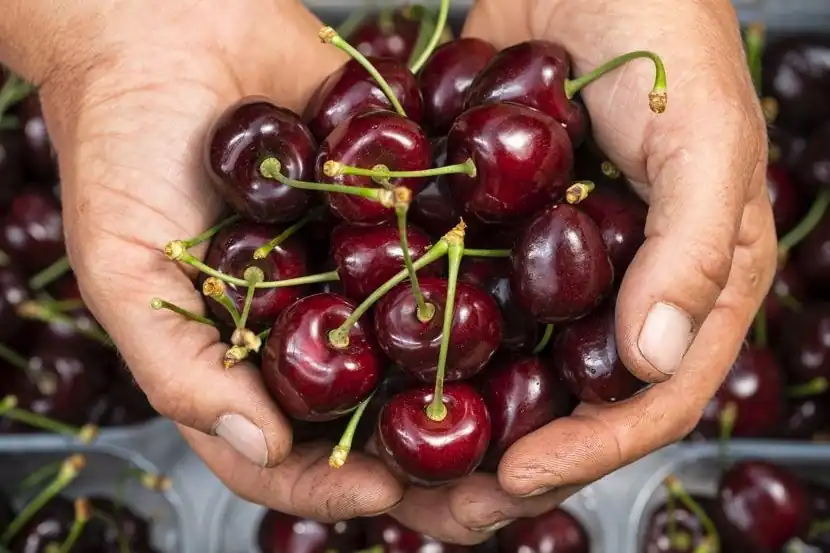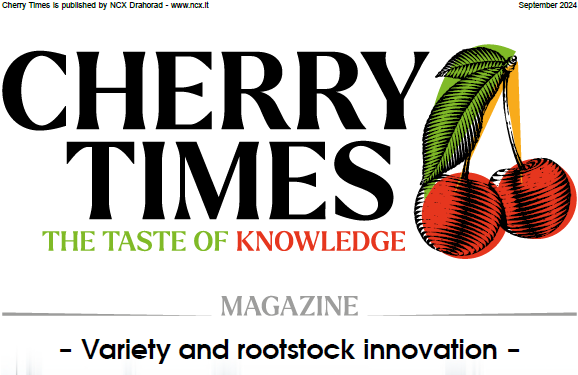The future of late cherries in Europe could be enriched by new, unexpected players.
On July 17–18, 2025, as part of the Gira de Variedades Tardías de Cerezo, ANA Chile® — exclusive licensee of the LFP Program in Chile — carried out a technical tour in Germany, visiting commercial orchards, trial fields, and specialized nurseries.
The goal: to evaluate in the field the performance of the new late varieties developed by the program, identifying those with the most promising potential for the Chilean and European markets.
High-potential red varieties
Kir Vulcano® – Extremely late blooming and harvested around Lapins timing. Stands out for its large size (30–32 mm), firm flesh, excellent sweetness (22–23 °Brix), and remarkable cracking resistance, comparable to Regina.
Harvesting is made easier thanks to the long stem and clean fruit separation.
Kir Lamour® – Self-fertile and harvested around the same time as Sweet Heart. Offers an intense flavor (23 °Brix) and high yields, provided proper crop load management is applied.
It is better suited to areas with low rainfall, given its higher sensitivity to cracking.
Kir Rosso® – Among the most productive varieties of the entire program, self-fertile, ripening about two weeks after Staccato.
Maintains a uniform size even with heavy crop loads, ensuring good firmness and balanced sweetness (20.5 °Brix). Very low sensitivity to cracking.
Kir Rio® – Self-fertile, with cracking resistance greater than Regina and low susceptibility to Pseudomonas.
Fruit with thick skin, good firmness, and harvested two weeks after Regina: a strategic choice to extend the export window.
The new bicolors: quality and resilience
Alongside the red varieties, the LFP Program is also working on bicolor selections.
Two in particular have drawn attention for their quality and ripening period: one harvested at the same time as Staccato, the other a week later.
Both have shown low incidence of bruising damage, even in challenging climatic conditions, making them ideal for markets demanding premium bicolor cherries.
Prospects for a broader global market
Thanks to these new late varieties — both red and bicolor — ANA Chile® and the LFP Program aim to extend the harvest calendar and enhance competitiveness in international markets.
Higher quality, greater resilience, and an extended commercial window: a strategy that promises to inject new energy into cherry exports.
Source: anachile.cl
Image source: Graeb
Cherry Times - All rights reserved












